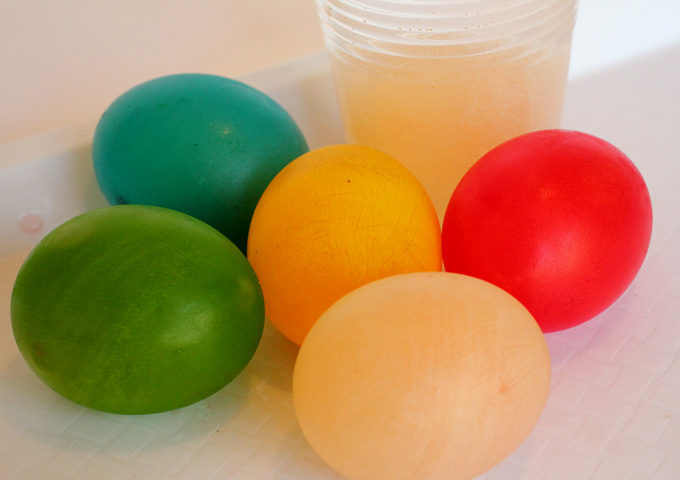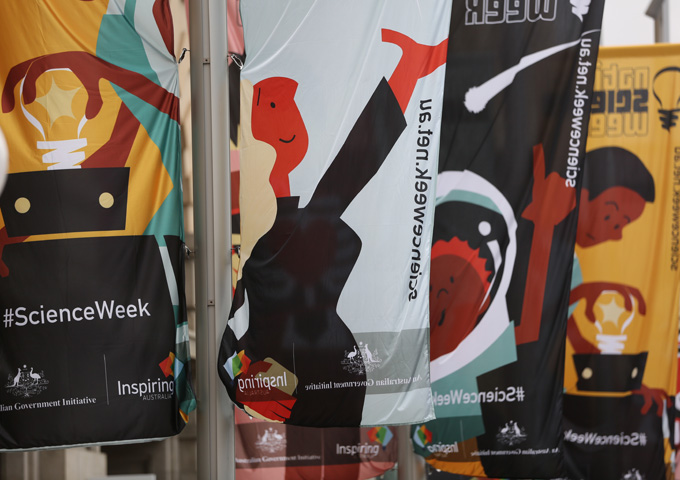
What you need:
- 6 eggs and a container large enough to hold the eggs (with a lid or plastic film to cover the container)
- white vinegar, 2 litres
- 5 cups
- food colouring in 4 colours
What to do:
This activity will take 3 days to complete. It is messy and best done near a sink. Wearing gloves is recommended to avoid touching the vinegar. If the weather is warm, keep the eggs in the fridge.
- Place the eggs in the container and cover with vinegar. Bubbles may be seen appearing on the eggs as the shells start to dissolve.
- Leave the eggs soaking in vinegar for 1 day and then carefully pour off the vinegar and rinse the eggs in water.
- Repeat Steps 1 and 2. When rinsing in water, gently rub each egg to remove any remaining shell.
- Fill the 5 cups with water to about ½ full. Add a different colour of food colouring to each of the first 4 cups and leave the 5th cup as it is. Take care to avoid getting food colouring on your hands or on any furniture as it may stain.
- Place an egg in each cup and add more water if needed to completely cover the eggs. Leave the eggs soaking for 1 day before checking to see if there are any changes.
- Meanwhile, use the 6th egg to test its bounciness! Start by dropping the egg into a bowl, from a height of about 10 centimetres, before testing greater heights. If any of the eggs break, throw them away.
What’s happening:
The calcium carbonate in the eggshells reacts with the vinegar (acetic acid) and one of the products of the reaction is carbon dioxide gas which forms bubbles on the eggs. After the shells dissolve, a semi-permeable membrane remains intact.
CaCO3 + 2CH3COOH -> Ca(CH3COO)2 + CO2 +H2O
Water passes through the membrane and into the eggs via osmosis, causing the eggs to swell.
Protein molecules inside the eggs are too large to pass through the membrane and water tends to move from an area of low concentration of dissolved chemicals (outside the eggs) to an area of high concentration of chemicals (inside the eggs).
The pigment molecules in the food colouring are small enough to pass through the membrane and they move from an area of high concentration (outside the eggs) to an area of low concentration of pigment (inside the eggs).






